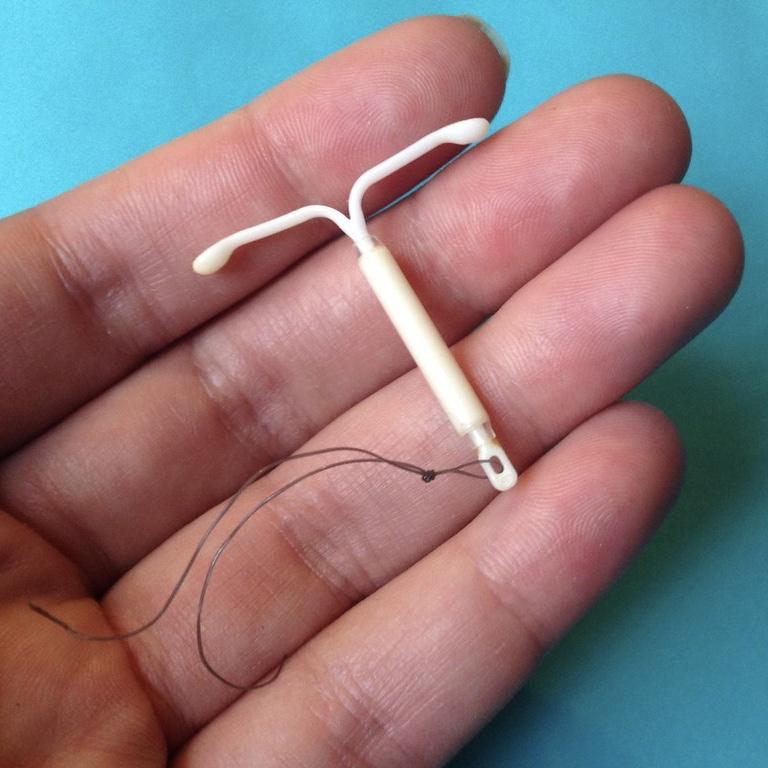

sexual assualt
full contents
note - this site is still under construction and more information will be added soon

NOTE: comic inserts are from Boo! It’s Sex by Danielle Corsetto , Monica Gallagher and is used with permission.
Contact: sexedrevolutionproject@gmail.com
this page is still under construction! stay tuned

this page is still under construction! stay tuned

this page is still under construction! stay tuned

Contraception is the act of preventing pregnancy, as well as in some cases, STIS. Using contraception leads to safer sex.
There are many types of contraception, such as:
- Condoms (external)
- Condoms (Internal)
- The Pill
- Dental Dams
- Implants
- IUD
- Injection
- Vaginal Ring
- Diaphragm
- The Sponge
- Plan B
- Tubual Sterilisation
- Vasectomy

There are two types of condoms, the male condom and the female condom.
The Male Condom
An male (external) condom is a thin strong latex (rubber) pouch that comes in different sizes, colours and styles.

Non-latex condoms are available for people with a latex allergy.
They are put on an erect penis or can be placed on vibrators and sex toys (such as dildos).
How do Male Condoms work?
Male (external) condoms act as a barrier against pregnancy and STIs. Unlike other types of contraception, condoms protect against STIs as well as pregnancy. External condoms block ejaculate (cum or semen) from entering the vagina to prevent pregnancy. They are up to 98% effective when fitted correctly and can be used with other forms of contraception.
How to choose condoms
Condoms come in different sizes, so choose the right size for you. Always use condoms that meet Australian standards. If you are travelling overseas, check they meet international standards.
When properly stored, condoms have a lifespan of about 5 years. Always:
- make sure the use-by-date on the packet is current
- keep condoms in a cool, dry place as they can be damaged by heat.
- buy non-latex condoms if you or your partner is allergic to latex.
always choose reputable brands and check the packaging and instructions.
How to use a male condom
- Open the packet carefully – avoid tearing the condom with your jewellery, teeth or fingernails.
- Check which way the condom unrolls, but do not unroll it.
- If you don’t get the condom on properly the first time, throw it away and use a new condom.
- Gently squeeze the top of the condom to remove air and unroll it as far as it will go down the erect penis or sex toy.
- Water-based lubricant (lube) can be used. Lube is a jelly or liquid-like material to reduce friction and stop tears. It can also make sex more enjoyable.
- Don’t apply lubricant (lube) inside the condom – it may cause slippage making the condom less effective.
do not use oil based lubricant with a latex condom as it can break
How to dispose of a condom
- How to dispose of condoms
- After using a male (external) condom during sex:
- Withdraw the penis after ejaculation by gently holding the condom’s rim. Be careful not to spill any semen.
- Tie the open end of the condom in a knot.
- Do not flush the condom down the toilet, put it in the bin.
What to do if...
The condom rolls up – check the condom and roll it back to the base of the penis.
The condom slides off – pull out and use a new condom. Check you have the right size.
You cannot hold an erection – withdraw the penis, holding on to the condom. Condoms can only be used when the penis is erect.
Where to get condoms
External (male) condoms and lubricant are usually easy to get. They are available from:
- supermarkets
- pharmacies
- sexual health clinics
- youth services
- sex shops
- online
Advantages of condoms
- protect against STIs
- protect against pregnancy
- readily available
- different sizes
- cheap
- improve the quality and duration of an erection
The Female Condom
a female condom is an internal condom. Their soft pouch is made of nitrile which is a synthetic rubber. It has flexible rings at each end, and one end is closed. It is inserted into the vagina or anus before having sex.

How female condoms work
Female (internal) condoms are also used for safer sex because they block the exchange of body fluids during any form of sexual contact. This includes anal, oral, vaginal, some skin-to-skin contact and sharing of sex toys).
To prevent STIs use a new condom each time you have sex and when switching to a different kind of sex (such as from anal to vaginal).
Female condoms are 95% effective when used correctly.



How female condoms work
- Check the use-by date first.
- Follow the instructions on the packet.
- To avoid an unplanned pregnancy and STIs, put the condom on before the penis or sex toy touches the vagina or anus.
- Open the packet slowly, make sure not to tear the condom with anything sharp (such as jewellery, teeth or fingernails).
- When open, squeeze the closed end of the condom and insert it into the vagina or anus.
- The opening of the condom spreads outside the vagina or anus and over part of the genital skin.
- Guide the penis or sex toy into the condom making sure it does not slip under the condom.
- If the condom slips or bunches up when the penis goes inside, use more lubricant. You can use internal condoms with water, oil or silicone-based lubricants.
- Female (internal) condoms are for single use only. Once a condom has been used, wrap it in a tissue and throw it into a bin. (not down the toilet).
- Be careful when taking the condom out. Gently twist the opening and slide it out of the vagina avoiding any spillage of body fluids.
Do not use female (internal) condoms at the same time as male (external) condoms as they can move out of place.
Where to get female condoms
Female (internal) condoms are more difficult to get and more expensive than male (external) condoms. They are available at family planning clinics, sex shops, some pharmacies (chemists) and online.
advantages
- protect against sexually transmissible infections (STIs)
- easy to use
- can be bought without a script
- can be used with any type of lubrication
- can be inserted hours before having sex
- can be used after giving birth
- can be inserted hours before having sex.

- There are 2 types of oral contraception available in Australia – the combined pill, known as ‘the pill’, and the progestogen only pill.
- Both are taken daily, and are available on prescription. They are very effective forms of contraception if used correctly.
If used correctly the pill is at least 99% effective at preventing pregnancy. Allowing for mistakes, it is 93% effective.
The mixed pill
The progesterone pill
- contains only progestogen.
- contains the hormones oestrogen and progestogen
What stops the pill from working?
- you miss a pill or it is taken more than 24 hours late
- you vomit within 3 hours of taking it
- you have very severe diarrhoea
- you are taking some medications or natural remedies. (Check with your doctor, nurse or pharmacist.)
How to use the pill
- You use the pill by swallowing one pill around the same time every day.
- There are many different brands of the pill.
- Most come in a pack that includes both hormone and sugar pills.
- You will usually have your period (bleeding from your vagina) while taking the sugar pills.
- You can skip your period by missing the sugar pills and continuing to take the hormone pills each day, with the advice from your GP
How does the pill work?
- The pill works by stopping the ovaries from releasing an egg each month.
- It thickens the fluid around the cervix (opening to the uterus or womb) to prevent the sperm from entering.
When you start the pill for the first time, or after a break from the pill, it can take up to 12 days to start working to prevent pregnancy.
How to get the pill
You need a doctor’s prescription
Benefits of the pill
- be used to skip your period
- make your periods become lighter, more regular, and less painful
- improve acne
- reduce your chance of getting cancer of the uterus (womb), ovaries and bowel
- help with symptoms of polycystic ovary syndrome (PCOS) and endometriosis.
side effects of the pill
- irregular vaginal bleeding
- nausea
- sore or tender breasts
- headaches
- bloating
- changes to your skin
- mood changes.
- despite a common myth, the pill does not cause weight gain
The pill causes a very small increase in your risk of deep vein thrombosis (blood clot), heart attack or stroke. It may also lead to a tiny increase in your risk of breast cancer. The risk of developing breast cancer due to vaginal ring or pill use in people aged under 35 years is 1 in 50,000 per year.
if you miss a pill
- Take the missed pill as soon as you notice (this may mean taking 2 pills on the same day).
- Continue to take your pills as normal.
- Use condoms for the next 7 days if having sex.
- If you have had sex without a condom in the 7 days before missing a pill, you may need emergency contraception or you may need to skip your next sugar pills and start a new pill pack in the hormone section. This depends on where you are up to in the pill packet (check with your doctor, nurse or pharmacist).
if you get pregnant
- The pill won’t harm the pregnancy. It is safe to continue the pregnancy (and stop the pill) or to have an abortion.
- If you are breastfeeding, do not use the pill until your baby is 6 weeks old, as it may reduce your supply of breast milk and may increase your risk of thrombosis. After 6 weeks you can use the pill but other types of contraception might be better choices (check with your doctor, nurse or pharmacist).
- If you are not breastfeeding, you can start using the pill once your baby is 3 to 6 weeks old (check with your doctor, nurse or pharmacist).
does not protect you from sexually transmissible infections (STIs).

A dental dam is a thin, flexible piece of latex or polyurethane you can use for protection during oral sex.

how does it work?
Dental dams work by acting as a barrier during oral sex. You place the dental dam between your mouth and your partner’s vagina or anus. Similar to condoms, they prevent the spread of sexually transmitted infections (STIs).

how to use
- Carefully remove the dental dam from the packaging and unfold it.
- Lay the dental dam flat over your vagina or anus. Place the dental dam flat over your vulva during oral-vaginal sex. Place the dental dam flat over your anus during oral-anal sex. The dental dam should be big enough to cover your entire vaginal or anal area.
- Hold the dental dam in place during oral sex. You may want to apply a water-based or silicone-based lubricant between the dental dam and your vagina or anus. This may help keep the dental dam in place and make oral sex more pleasurable.
- Stop engaging in oral sex if the dental dam slips or breaks. Place a new dental dam over your vagina or anus before continuing.
- Throw away the dental dam after you use it.

where to get a dental dam
- some pharmacies
- online
- sex stores
You can use a dental dam during oral-vaginal contact (cunnilingus) or oral-anal contact (analingu).

- The contraceptive implant (Implanon NXT®) is a soft plastic stick about 4 centimetres long. The implant slowly releases a hormone, progestogen, into your body over time. Progestogen is like the hormone produced by the ovaries.
effectiveness
- The contraceptive implant is more than 99% effective at preventing pregnancy and can last for up to 3 years.
Use
- The implant is inserted (injected) under the skin of your inner upper arm by a trained doctor or nurse. A local anaesthetic is used so that you will not feel pain when this is happening, although you might feel some pressure or discomfort.
How it works
- The implant works by preventing the ovaries from releasing an egg each month. It also thickens the fluid around the cervix (the opening to the uterus or womb). This helps to prevent the sperm from reaching the egg.
- When the implant is first inserted into the arm it can take up to 7 days to start working to prevent pregnancy.
Where to get it
- Your doctor or nurse practitioner will write you a script and you can get the implant from your pharmacy. You will then need to return to the clinic to have the implant inserted.
- If you don't have a Medicare card it will be more expensive. It will be cheaper if you have a health care card.
Benefits
- Advantages of the contraceptive implant are:
- It is the most effective method of contraception.
- Once inserted (put in) you can forget about it for 3 years.
- It can last up to 3 years.
- Many users have no vaginal bleeding at all or very light bleeding.
- Periods may be less painful.
- Acne can improve.
- It is another choice if you have problems taking the hormone oestrogen. ‘The pill’ (also known as the combined pill) and the vaginal ring contain oestrogen and progestogen. The implant only contains progestogen.
- You can use it while breastfeeding.
- It is easy to remove.
- Once removed your fertility quickly returns to normal.
- The implant is not known to harm a pregnancy. It is safe to continue the pregnancy (and remove the implant) or to have an abortion.
- The implant can be inserted straight after you give birth, even if you are breast feeding.
- The implant has not been shown to cause weight gain.
side effects
- Once the contraceptive implant has been inserted your vaginal bleeding pattern (period) will change. It might be more often or irregular (at odd times).
- Around 20% of women will have no bleeding at all (this is not harmful to the body). Frequent or prolonged bleeding may get better with time.
- Some medications can help with this bleeding, speak to your doctor or nurse.
- Other possible side effects for a small number of users can include:
- headaches
- bloating
- changes to your skin
- sore or tender breasts
- mood changes.
- These side effects often settle with time.
- Rarely, the implant is inserted too deep and you may need minor surgery to have it removed.
- can be imapacted if you:
- are taking some medications or natural remedies (check with your doctor, nurse or pharmacist)
- leave it in for more than 3 years. To prevent this from happening, it may help to write down the date when you had the implant put in, or enter a reminder in your phone for when you need to have it replaced.

INTERUTERINE
DEVICES - IUD
- An intrauterine device (IUD) is a small contraceptive device that is put into the uterus (womb) to prevent pregnancy. The 2 types available in Australia are the:
- copper IUD (also called the non-hormonal copper IUD)
- hormonal IUD (Mirena™ and Kyleena™).
copper IUD
- The copper IUD is a small, T-shaped, plastic and copper device. It constantly releases a small amount of copper into the uterus.
- The copper IUD can also be used for emergency contraception instead of the emergency contraceptive pill (‘morning after pill’) if it's within 5 days of unprotected sex.
hormonal IUD
- The hormonal IUDs are small, T-shaped, plastic devices. They slowly releases a hormone (progestogen) into your uterus. Progestogen is like the hormone produced by the ovaries.
Both copper and hormonal IUDs are more than 99% effective at preventing pregnancy.
cost
- The hormonal IUD prescription is covered by the Pharmaceutical Benefits Scheme in Australia. It costs around $7 if you are a Health Care Card holder and around $43 if you are not.
- The copper IUD is not covered by a Health Care Card. The cost in pharmacies can be around $70 to $120. There may also be an insertion cost from the health professional.
advantages
- They are more than 99% effective in preventing pregnancy.
- They last for a long time – Mirena™ and Kyleena™ can last for 5 years, and the copper IUD can last for 10 years.
- They are safe to use if you are breastfeeding.
- No medications stop them from working.
- They provide another contraceptive choice if you have difficulty taking the hormone oestrogen. (The combined pill and the vaginal ring contain both oestrogen and progestogen.)
- Once put in, you don’t need to do anything more apart from checking the thread each month after your period to ensure it has not moved out of the correct position.
- The device can be taken out at any time by an appropriately trained doctor or nurse.
- Your chance of getting pregnant will go back to normal as soon as the copper or hormonal IUD has been taken out.
advantages
hormonal
copper
- Most users have no vaginal bleeding at all, or a light regular period.
- Periods may be less painful.
- It is a choice for those who do not want to use hormonal contraception.
- It is a very effective method of emergency contraception.
risks
- When first inserted, some may experience period-type cramping that usually settles after a few days.
- Sometimes the IUD can come out. This is more common in the first 3 months of it being inserted.
- Your period will change. Spotting or frequent bleeding is common in the first 3 to 6 months. By 6 months around 90-95% of people may have a light regular period or no bleeding at all (this is not harmful to the body).
- You may experience tender breasts, headaches, skin changes and mood changes. These side effects nearly always settle with time. The hormonal IUD has not been shown to cause weight gain.
In about 1 in 500 people, a small hole in the wall of the uterus (womb) may be created while the IUD is being inserted. The IUD can move through the hole and sit in the wrong place. If this happens, keyhole surgery (known as a laparoscopy) is required to have the IUD removed.
Around 1 in 300, may get an infection when the IUD is first inserted. This can be successfully treated with antibiotics.
It is very unlikely to get pregnant when using an IUD. If you do get pregnant with an IUD in place, there is a higher chance of ectopic pregnancy. This means that the pregnancy may settle in the fallopian tubes (pathway of the egg to uterus). If this happens, seek urgent medical assistance.
pregnancy
- If you become pregnant while using an IUD, see a doctor or nurse as soon as possible and have the IUD removed. The doctor or nurse will also need to rule out a pregnancy in your fallopian tubes (ectopic pregnancy).
- If the IUD is removed, you can choose to continue or terminate the pregnancy (have an abortion).
- If the IUD is not removed and you continue with the pregnancy, there is a higher risk of miscarriage or delivering the baby early (premature labour).
- You can have an IUD inserted within 2 days after giving birth.
- If it’s not inserted straight after birth, then you need to wait at least 4 weeks.
- IUDs are safe to use if you are breastfeeding.


- The contraceptive injection is an injection of the hormone progestogen. Progestogen is like the hormone produced by the ovaries. It is sold as Depo-Provera® or Depo-Ralovera® in Australia.
effectiveness
99%
effective
Each injection is more than at preventing pregnancy and lasts for 12 to 14 weeks.
Its effectiveness will be reduced if the injection is delayed.
how it is used
A doctor or nurse will inject the injection into the muscle tissue in your arm or bottom.
For continued contraceptive protection this should be repeated every 12 to 14 weeks.
how it works
The injection works by preventing the ovaries from releasing an egg each month. It also thickens the fluid around the cervix (opening to the uterus or womb). This helps to prevent the sperm from reaching the egg.
It can take up to 7 days to start working to prevent pregnancy the first time or after a break.
this injection can be done by your GP or at a sexual health clinic
benefits
- very effective
- most users have no vaginal bleeding at all or very light bleeding
- periods may be less painful
- lasts for 12 to 14 weeks
- can be used while breastfeeding
- no medications affect it
- an alternative to the pill
side effects
- menstrual bleeding pattern (period) will change.
- Around 20% of users will gain weight.
- There is a small drop in your bone density
- headaches
- bloating
- changes to your skin
- sore or tender breasts
- mood changes.
may not work if not taken at correct time


effectiveness
how to use
- To use a vaginal ring, you squeeze the ring and insert it into your vagina, like inserting a tampon. It stays in your vagina for 3 weeks.
- You then take it out and throw it away and wait 7 days before inserting a new ring.
- You will usually have your period (bleeding) a few days after removing the ring. You can skip your period by inserting a new ring straight away and missing the 7-day break.
what stops it working?
how it works?
- A vaginal ring works by stopping your ovaries from releasing an egg each month.
- It also thickens the fluid around the cervix (opening to the uterus or womb), which helps to prevent the sperm from entering.
- It can take up to 7 days to start working.
- Speak with a doctor, nurse or pharmacist about the best option for you.
where to get a vaginal ring?
benefits of vaginal ring
- can be used to skip your period
- may make your periods lighter, more regular, and less painful
- can cause acne to improve
- may reduce your risk of getting cancer of the uterus (womb) and ovaries
- can help with symptoms of polycystic ovary syndrome (PCOS) and endometriosis.
- Once you stop using a vaginal ring your fertility quickly returns to normal.
possible side effects
- an increase in vaginal discharge (fluid from the vagina)
- irregular vaginal bleeding
- nausea
- sore or tender breasts
- headaches
- bloating
- changes to your skin
- mood changes.
serious health concerns:
- The vaginal ring slightly increases your risk of a deep vein thrombosis (blood clot), heart attack or stroke.
- It may also lead to a tiny increase in your risk of breast cancer. The risk of developing breast cancer due to vaginal ring or pill use in people aged under 35 years is 1 in 50,000.
when a vaginal ring isn’t suitable
- have certain types of migraine headache (check with your doctor)
- Are obese
- have a family history of deep vein thrombosis
- are taking certain types of medication which might stop the ring from working (check with your doctor)
- have had some health problems such as high blood pressure, heart or liver problems
- are over 35 years and smoke
- have been treated for breast cancer
- are unable to move around for a long time


what is it?
how does it work?
- It fits inside the vagina and covers the cervix (entrance to the uterus or womb) to stop sperm from meeting and fertilising an egg.
effectiveness
- If used correctly every time you have sex, diaphragms are 86% effective at preventing pregnancy.
- If used incorrectly (for example, not inserting properly before sex or removing too soon after sex), they may only be 82% effective.
when it doesn’t work
- not inserted correctly
- used without the gel
- taken out less than 6 hours after sex
- torn
- past its use-by date.
how to use
- Place a teaspoon of gel in the cup of the diaphragm.
- Put the diaphragm inside your vagina so it covers the cervix (opening to your uterus).
- Insert the diaphragm up to 2 hours before having sex.
- Leave it in place for at least 6 hours after sex.
- Do not leave the diaphragm in place for longer than 24 hours.
- Before you use the diaphragm for the first time, you can ask a doctor or nurse to check that it fits well and you are inserting it correctly.
advantages
- You can insert them hours before having sex.
- They have little or no side effects.
- You can buy them without a script.
- They are a choice for those who do not want to use hormonal contraception.
side effects
- irritation of the vagina or penis
- increased risk of bladder infection (cystitis).
- Rarely, use of a diaphragm might cause toxic shock syndrome.
when not to use
- Are prone to bladder infections.
- Gave birth 6 weeks ago or less – this is because the size of diaphragm required may change as the uterus returns to normal size.
- Are unable to feel if your cervix is correctly covered by the diaphragm.

what is it?
The birth control sponge (aka the contraceptive sponge or “the sponge” for short), is a small, round sponge made from soft, squishy plastic. You put it deep inside your vagina before sex. The sponge covers your cervix and contains spermicide to help prevent pregnancy. Each sponge has a fabric loop attached to it to make it easier to take out.
how does it work?
The sponge prevents pregnancy two ways: It fits snugly against your cervix, blocking the entrance to your uterus so sperm can’t get to your egg. The sponge also contains spermicide, which slows sperm down so it can’t reach your egg.
effectiveness
If women who have never given birth always use the sponge perfectly every time they have sex, it’s about 91% effective.
If you have given birth and always use the sponge perfectly every time you have sex, it’s about 80% effective.

what is it?
- Emergency contraception is used to prevent unplanned pregnancy if you had sex without contraceptive protection.
- Emergency contraception can be taken up to 5 days after unprotected sex. You can choose between 2 types in Australia:
- the copper intrauterine device (or non-hormonal IUD) – can be inserted by specially trained do5ctors or nurses
- emergency contraceptive pills (sometimes called the ‘morning after pill’).
when to use
- the copper IUD must be inserted within 5 days of having unprotected sex. You will need to see a specially trained GP or nurse at a sexual health clinic to have it inserted
- the emergency contraceptive pill should be taken as soon as possible (up to 4 or 5 days) after unprotected sex. The pill can be bought over-the-counter at a pharmacy without a prescription.
effectiveness
- copper IUD – more than 99% and can last up to 5 to 10 years.
- emergency contraceptive pills – depending on the type approximately 85% (Ulipristal acetate is more effective than levonorgestrel).
doesn’t work when...
- are late taking them
- vomit within 3 hours of taking them
- weigh over 70 kg
- are taking certain medications (check with pharmacist).
how it works
- The copper IUD stops sperm from reaching and fertilising an egg. It also changes the lining of your uterus (womb), so a fertilised egg won’t stay in it to start a pregnancy.
- The emergency contraceptive pill prevents or delays the ovaries releasing an egg. If you have unprotected sex again you may need another dose.
where to get emergency contraception
- Copper IUD - Talk to your GP or nurse. You need to make an appointment to have it inserted.
- Plan B Pill - You can buy emergency contraceptive pills at a pharmacy without a prescription.


what is it?
- Tubal sterilisation, also known as tubal ligation or ‘having your tubes tied’, is a permanent method of contraception that you can choose if you are sure that you do not want to have children in the future.
how it works?
- Tubal sterilisation blocks the path of the sperm through the fallopian tube. Eggs are still released by the ovaries, but are broken down and safely absorbed by the body.
risks
- an allergic reaction to the anaesthetic
- damage to nearby organs, such as the bowel or ureters
- infection, inflammation and ongoing pain
- haemorrhage (very heavy bleeding)
- infection of the wound or one of the fallopian tubes.

what is it?
- Vasectomy is minor surgery in which the tubes that carry the sperm from the testicles to the penis are cut.
- This method of contraception is sometimes also called sterilisation or ‘the snip’.
effectiveness
- Vasectomy is over 99% effective at preventing pregnancy. It is considered to be permanent.
- However, it takes around 3 months from the time of the procedure for a vasectomy to begin working
advantages
- is very effective
- can be low cost compared to purchasing other contraceptive methods
- is a quick and simple procedure
- is permanent (lasts forever)
- does not affect your ability to enjoy sex or reach orgasm
- allows your partner to stop taking other types of contraception to prevent pregnancy.


this page is still under construction! stay tuned



STIs are Sexually Transmitted Infections, also known as STDs, Sexually Transmitted Diseases.
STIS can only be protected against with barrier protection methods, such as internal condom, external condom and dental dams
this page is still under construction! stay tuned


this page is still under construction! stay tuned



this page is still under construction! stay tuned

this page is still under construction! stay tuned

this page is still under construction! stay tuned

this page is still under construction! stay tuned

this page is still under construction! stay tuned

this page is still under construction! stay tuned

this page is still under construction! stay tuned


this page is still under construction! stay tuned



this page is still under construction! stay tuned


this page is still under construction! stay tuned


this page is still under construction! stay tuned






this page is still under construction! stay tuned






this page is still under construction! stay tuned



this page is still under construction! stay tuned



this page is still under construction! stay tuned

this page is still under construction! stay tuned

this page is still under construction! stay tuned

this page is still under construction! stay tuned


this page is still under construction! stay tuned


this page is still under construction! stay tuned

this page is still under construction! stay tuned

this page is still under construction! stay tuned